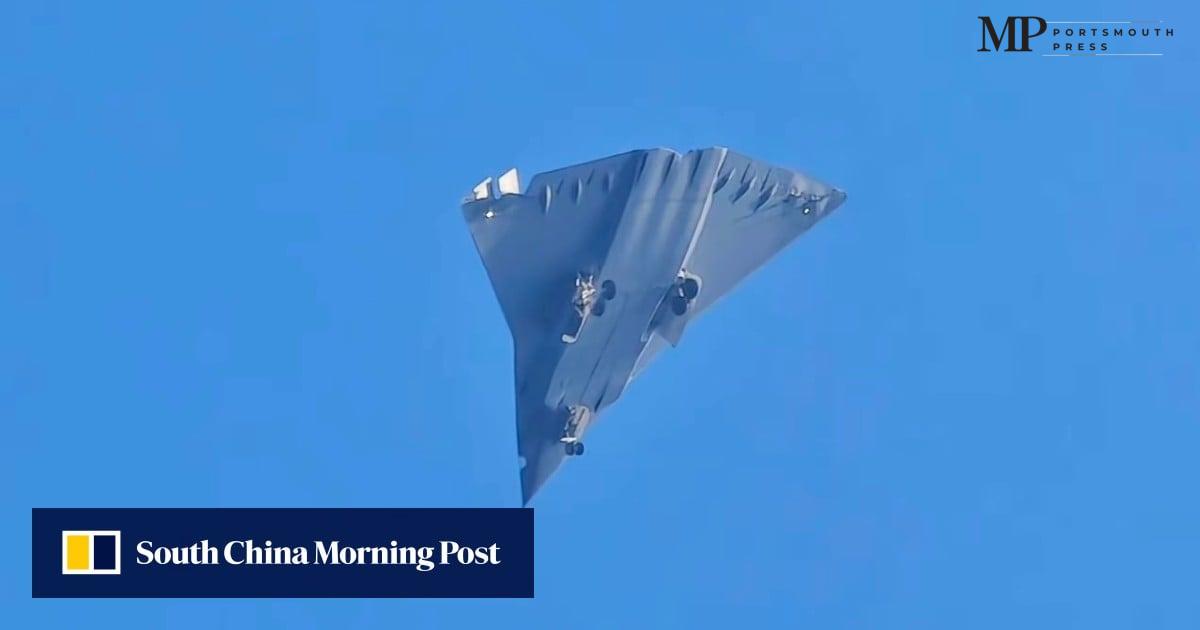In a moment that has captured the attention of military experts and aviation enthusiasts around the world, China has reportedly witnessed the maiden flight of its new sixth-generation stealth fighter jet. This impressive aircraft, boasting a unique triangular design and powered by three engines, took to the skies over Chengdu, located in Sichuan province. Images and reports about this highly secretive jet have begun to circulate, sparking discussions about its potential capabilities and what it could mean for global military balance.
What We Know About the Stealth Fighter
This brand-new fighter has several features that set it apart from other aircraft in the skies today. It was first spotted flying alongside the existing J-20 fighter jet — a fifth-generation model — suggesting that it is part of a more advanced operational framework for the People’s Liberation Army Air Force (PLAAF). The flight took place under careful circumstances, with reports indicating that the landing gear was visible during the flight, portraying a blend of traditional and innovative design elements.
Power and Design
Experts reviewing the available footage reveal that this stealth jet showcases an advanced triangular and tailless configuration, built specifically to enhance its ability to avoid radar detection. With the notable presence of three engines, the design may allow for high-speed performance and increased agility in combat situations. Moreover, the unique shape and internal designs likely contribute to stealth capabilities, effectively reducing the jet’s radar signatures.
Potential Game-Changer in Military Technology
Chinese analysts believe that this fighter might actually possess stealth capabilities that could surpass those of existing models around the globe, including the US F-35 fighter jets. Some experts speculate that these advancements could align with what is known in military terms as ‘hypersonic speeds’, making it a significant upgrade for China’s air power. While Chinese authorities have not confirmed the jet’s official name or specifications, the implications of such technology continue to raise eyebrows internationally.
The Geopolitical Implications
The unveiling of this new stealth fighter represents not just a technological milestone but a potential shift in geopolitical balance, especially in the context of rising tensions among global military powers. Other nations will likely scrutinize the development closely, understanding that advancements in stealth technology can greatly impact air superiority strategies. The idea that China is advancing rapidly in military aircraft development brings about discussions regarding defense budgets, military alliances, and technological espionage in a global context.
Community and Industry Reactions
There’s a buzz in communities both within and outside China about what this development entails. Aviation enthusiasts are particularly fascinated by the design and engineering marvel that this jet represents, while military analysts are debating its implications for defense strategies. Companies that specialize in aerospace technologies might see this as a wake-up call to innovate further in order to keep up with evolving military needs.
Looking Ahead
The flight of this sixth-generation stealth fighter symbolizes more than just technical prowess; it represents the heights of ambition within the Chinese military apparatus as it continues to modernize and adapt to contemporary challenges. With the global stage continuously evolving, all eyes will remain on China to see how it proceeds with this technology, and what further advancements might emerge in the coming years.
Table of Key Features of the New Stealth Fighter Jet
| Feature | Description |
|---|---|
| Type | Sixth-generation stealth fighter |
| Design | Triangular, tailless configuration |
| Pilot Status | Potentially crewed |
| Engines | Three engines for enhanced performance |
| Operational Capabilities | Possibly capable of hypersonic speeds |
| Stealth Technology | Advanced radar-evading features |
This exciting development not only signifies China’s ambitions in military aviation but poses questions about regional security and the future of global air power. As countries like the US and Russia continue to develop their own advanced fighter jets, the game of technological enhancement is far from over.









